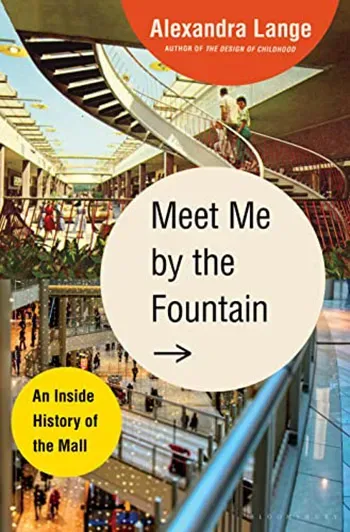MEET ME BY THE FOUNTAIN: AN INSIDE HISTORY OF THE MALL
ALEXANDRA LANGE
� 2022 Bloomsbury
$28.00
320 pages
Viktor Gruenbaum knew design.
He'd fled the Nazis in Vienna in 1938, immigrated to New York, changed his surname, and almost immediately landed a job creating buildings for corporate exhibitors at the New York World's Fair. Then he worked as a designer for high-end boutiques and stores and, turning his eye toward the problems facing downtown stores (versus suburban stores with more parking), Gruen saw a solution: he created the first mall.
It "was a national event," says author Alexandra Lange in the cultural history Meet Me by the Fountain.
Within a very short time, other designers realized that shoppers perceived the mall as a "treat," and they made it even more so. Rocks, ponds, and greenery were added, along with park benches and mini-zoos. Child-friendly zones were created. Stores were required to upgrade or remodel every few years, and underperforming stores were dropped, often in favor of national chains.
Then, about 20 years after its creation, the mall itself began to morph into open-air marketplaces. This was, says Lange, both good and bad. Marketplaces revitalized downtowns and made use of abandoned or derelict buildings, but creators often ignored the things that made such pedestrian malls work.
So if the mall needed to change, why not go bigger? Why not invite senior mall-walkers and teenagers flush with cash and young arcade gamers? In fact, what about offering public spaces for meetings, and movie theatres and restaurants for every budget?
It sounded great and shoppers loved it – until they didn't. In 1980, says Lange, the notion that the mall was "dying" was first raised in the media.
It wasn't the last. Even the word, says Lange, is going out of favor.
But when was the last time you were in a mall? For most Americans, it was sometime this week, and this book explains why: malls have never stopped changing to become what shoppers want in the moment.
This shift has been for the better: malls of the 1960s were marred by racism, malls of the '80s by a certain amount of blight. Still, despite all the mall killjoys who crow about its demise, Lange pooh-poohs any sort of death. Malls survive by adapting – something they've done well.
But they can do better, she says, by tapping into nostalgia. That's one thing, she points out, that Americans love.
Reading Meet Me by the Fountain is like looking in the nooks, crannies, and hidden hallways of your local shopping emporium with a critical eye. It harkens back to your childhood in the most intriguing way.


